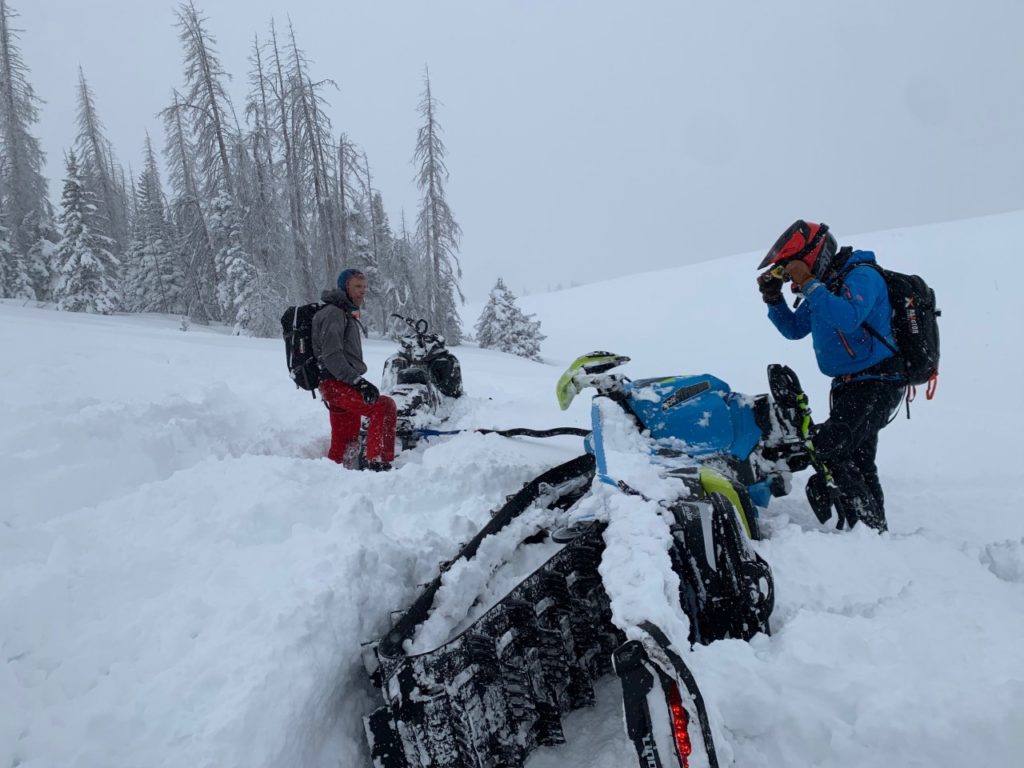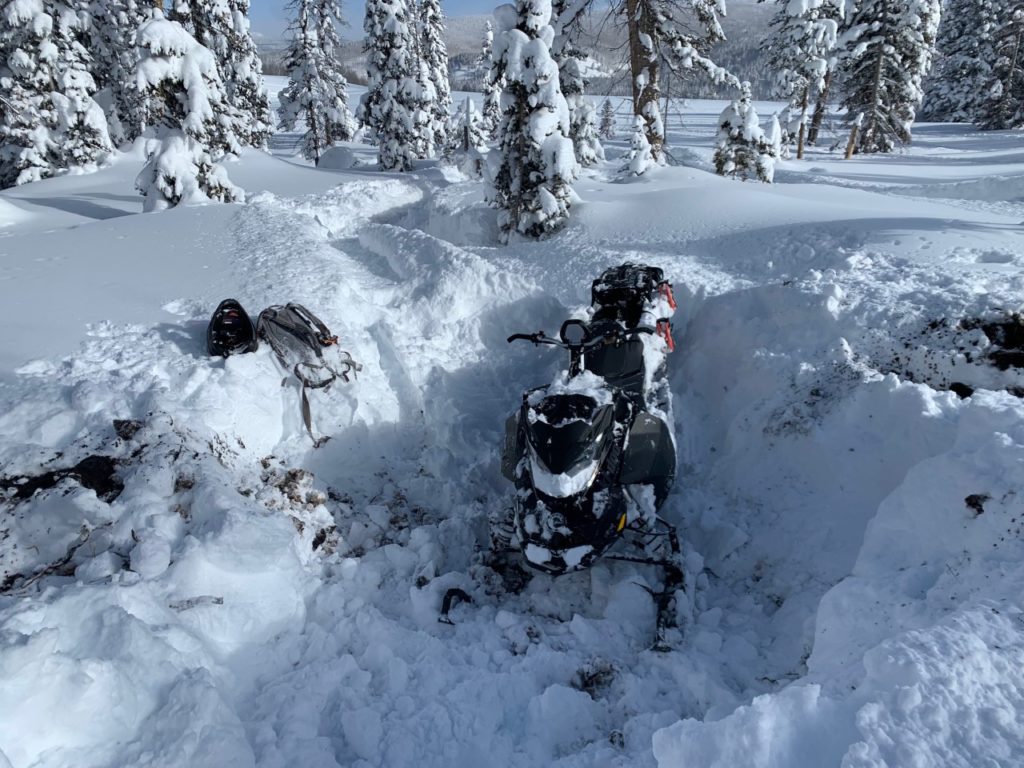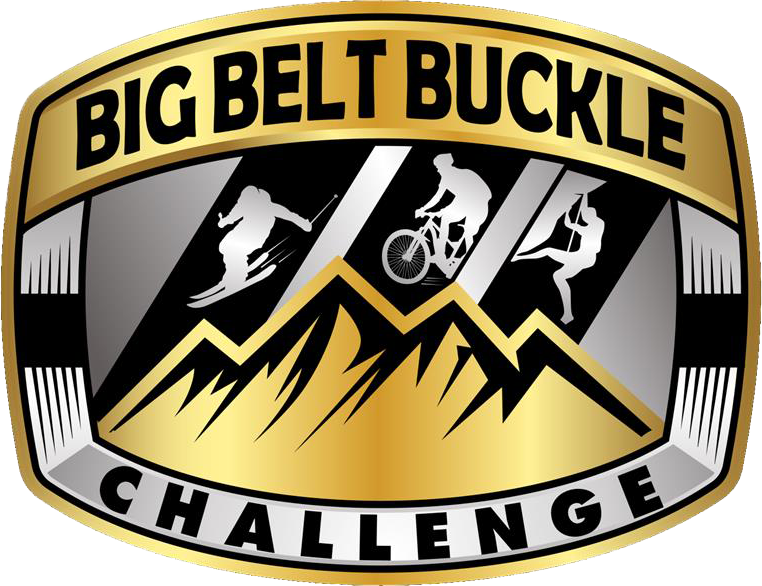The return from covid took a lot longer than I expected.
By January 22 and into early February, I was able to start getting out on the powder sled and learning how to ride that thing! Learning how to carve and get a powder sled on edge was one of the coolest sports I’ve ever participated in. We had some epic days in February—wide open fields, tons of residual or fresh powder, and endless mountains and valleys in the Uintas. A mind-blowing experience!
It is a workout; it’s totally different from the trail riding I did in my 20s in New England, and it’s beyond a blast! Fortunately, I have a lot of experience riding dirt bikes, and am not afraid of the throttle so it came I thought pretty acceptably. Powder sledding is unlike anything else. It is a cross between snowmobiling and jet skiing, really. The concept is that to turn that 450-pound machine, you have to lean it over, steer the opposite direction (like drifting a car), get it on its side, and give it enough throttle so as to not tip over, but not so much you lose control. It is an art and a science and requires a bunch of hours of practice to get decent, and a lot of time to get good. The learning curve is steep.
After getting out a half dozen times, I was able to go most places, but at times it required a LOT of work. It is necessary to learn to ride many different environments—wide open fields, very fast trail rips at around 70 mph, very tight tree groves, steep up and downs, and side tracking. You’re often standing on one side of the sled on a very steep hill where if you slip, the sled can roll a number of times down the hill. A day doesn’t go by without getting stuck at least once if you are really ripping it up in the snow and getting outside your comfort zone, and more likely you are good for three to eight good “stucks”! Sometimes you can get out pretty easily, but sometimes the amount of digging is difficult to imagine.

Digging out from getting stuck can be a 15-minute full effort or an hour-long ordeal—most times requiring multiple guys digging, pulling, and tying the stuck sled to a free sled and hoping that both don’t get stuck, which definitely happens. My experience learning to ride was typical and learning to unbury is a BIG part of the learning curve. There are a lot of techniques to wrestle and launch out of powder—which, without exaggeration, can be up to your neck and beyond. For example, once I got stuck in some trees and when I jumped off the sled to start digging, I was in snow up to my neck! I couldn’t believe it. Another time I was going over a crest and then dropped eight feet into a river. Both of those incidents required hour-long efforts to get free…and your heartrate gets throttled at the altitude and with the effort needed.

Death Valley Training Pedals
By the end of January, I was feeling like I could do some nice, steady, consistent miles on my road bike, so I headed to Death Valley National Park with my friend Tony and girlfriend Kara to do some bigger miles and bigger climbs.
We chose Death Valley because I had never been and always wanted to go, the weather looked perfect and it was still COLD in Utah, and most importantly, we wanted to get a feel for what the area is like for when we do the final of the BBBC events in late September/early October: pedal 140 miles through Death Valley to Mount Whitney, then climb it.
The trip went perfectly. We really lucked out on the weather—it was perfect and not too windy during the days. We did 5,000 ft. of climbing and approximately 38 miles a day for two back-to-back days. 5,000 ft. in 19 miles is a great, long, steady climb and then a smooth, fast descent back to the van.

